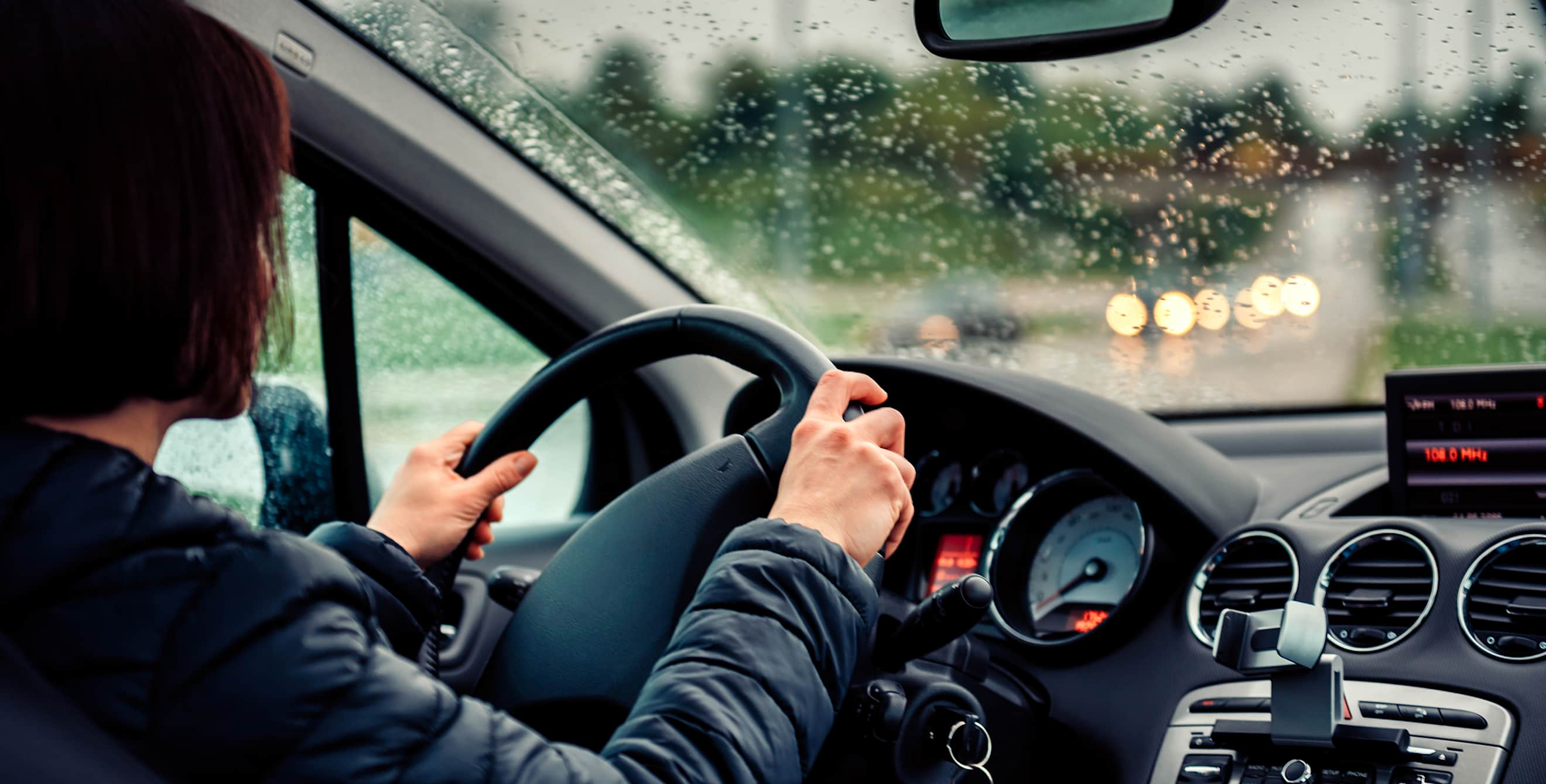
Nervous Driver? Here's How to Get More Comfortable on the Road
Overcome a fear of driving and gain confidence behind the wheel with these 6 tips.

Driving anxiety can occur for many reasons, such as a lack of experience or concern about other drivers' actions, says William Van Tassel, manager of AAA’s driving training programs. Some drivers may feel discomfort with certain situations (such as driving in stormy weather or late at night)‚ while others may find their confidence shaken after getting in an accident.
“A lot of people assume that only older drivers are nervous drivers. But really it can happen at any age,” says Laura Adams, a driving and education safety expert at Aceable, an online driver’s education provider. Whatever the cause of your nerves, it’s a good idea to try to get past them. Being tense does not tend to result in good driving, says Adams.
Looking to quash your driving-related nerves? We spoke to experts to get practical tips for how to build your confidence behind the wheel.
Prepare and practice.
"Knowledge is power," says Lauren Fix, an automotive expert, ASE certified technician, and race car driver. That's true for all drivers, but particularly new ones. Understanding how your car works and how to handle all sorts of scenarios that might come up while you're behind the wheel is a surefire way to quell anxiety.
Stressed about snowy roads? Not sure how anti-lock brakes or driver assistance technologies work? “Learn about it,” suggests Fix. Reading articles and watching videos can help curb anxiety for new and experienced drivers, she says. Once you get the gist of how to drive under certain conditions, Fix recommends getting in some practice: Head to a deserted parking lot where you can get a sense of your vehicle’s capabilities or gain comfort and familiarity with driving in inclement weather.
Practice can also be restorative in the days and weeks following an accident. Take slow, simple steps to get past accident-related nerves. Adams recommends running a quick errand to a nearby spot, or going for a drive around your neighborhood, where the streets and roads are familiar. “Making even a few trips successfully will begin to build your confidence again,” says Adams.
Get familiar with your vehicle.
If you're informed about how your car works, you'll likely feel more in control, confident, and comfortable. “Make sure you know the controls, where they are, and how they work so you are not trying to adjust them while you are driving,” recommends Fix. That is, figure out your wiper settings before a torrential rainstorm sends sheets of water against your windshield.
Online videos can be helpful, says Fix. You can watch an overview of your car’s functionality, whether it’s a new model or dates back a decade, on the manufacturer's YouTube page.

A professional driving instructor can help you safely practice and gain confidence in a safe, supportive environment.
Manage anxiety-provoking conditions.
Familiarity can ease anxiety—especially for newer drivers, who may just need experience to gain confidence. The first time merging onto the highway may feel overwhelming; by the hundredth time, easing in may feel simple, even automatic. Try having an experienced driver accompany you to provide support and talk through strategy for different situations, says Fix.
Smart Tip: Professional driving instructors can teach drivers of any age or experience practical behind-the-wheel skills and methods for easing driving anxiety and nervousness.
Sometimes, the best solution is staying away from situations that trigger driving anxiety. This may mean putting off errands if the forecast calls snow, or asking someone else to drive at night. “If someone is not comfortable driving in certain conditions, [such as] rain or snow, do everything you can to avoid those conditions,” Van Tassel says. Older drivers are often particularly adept at this kind of self-regulation, he notes.
Create a calm atmosphere.
There’s a lot inside a car competing for your attention: passengers, buzzing phones, a massive infotainment console, and whatever is playing through the speakers. Limit these distractions to create a calm, serene environment. That way, you’ll be able to focus on what matters most: your driving.
Start by putting away your phone, says Fix. Then, choose the person sitting in the passenger seat wisely. “Instead of having a rambunctious passenger, have a calm one,” AAA’s Van Tassel advises. And, opt for calming music at a reasonable volume, he recommends—or, turn the radio off entirely.
Focus on driving basics.
The two most important factors when driving are your speed and your direction, says Van Tassel. “A lot of the other stuff can go away,” he says. As you drive, pay attention primarily to reasons why you might need to adjust your speed (a light turning from green to yellow) or adjust your direction (to pass another vehicle).
Break down driving tasks into steps.
Part of the challenge of driving for some may be the need to do many things at once, especially for new drivers. Divvy up tricky tasks into the steps required for completion, suggests Van Tassel. “Concentrate on doing one thing at a time,” he says. “A car does best when it does one thing at a time.” That’s true for drivers, too, who can check off each step in order, rather than feeling overwhelmed by to-dos.
Take merging on to the highway, for example, which many drivers find intimidating. “Divide it up into a couple of steps to get a bit of breathing room,” Van Tassel says. Get up to speed on the on-ramp. Then, once it’s time to merge, all you’ll have to do is find a gap—no need to simultaneously steer the car and accelerate, says Van Tassel.